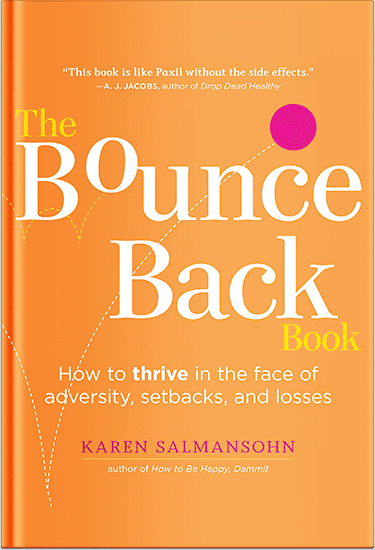 Construction sites are bustling hubs of activity, often filled with heavy machinery, workers, and materials.
Construction sites are bustling hubs of activity, often filled with heavy machinery, workers, and materials.
In this organized chaos, it’s vital to communicate well. This is needed for safety and promotion. One of the most versatile and impactful ways to convey messages on construction sites is through banners. From safety warnings to promotional advertisements, banners serve a multitude of purposes.
In this guide, we’ll explore the types of banners used in construction sites. We’ll cover their purposes, materials, and best practices for use so you get more customers.
Introduction to Construction Site Banners
Banners are vital. They improve safety, communication, and branding at construction sites. They act as versatile tools that go beyond mere decoration.
Banners boost visibility. They alert workers and visitors to hazards and promote the project or sponsors. They also serve as informative guides.
Additionally, they aid in providing crucial directional information, ensuring smooth operations. By learning about different types of banners and their uses. construction sites can improve communication. This will make work safer and more organized.
Safety Banners
Safety is most important on any construction site. Safety banners are needed to prevent accidents and to promote a culture of awareness. They do this among workers and visitors.
The banners have bold colors. They also have large fonts and clear symbols. These features help them convey messages quickly and effectively. Common safety banners include:
Hazard Warning Banners
Hazard warning banners alert people to potential dangers. They are used at construction sites. These may include warnings about falling debris or slippery surfaces.
They also warn of electrical hazards or restricted areas. Bright colors, like red or orange, grab attention. They are used with well-known symbols for easy understanding.
PPE (Personal Protective Equipment) Banners
Promoting PPE use is key. It prevents injuries on construction sites. PPE banners remind workers to wear helmets, safety goggles, gloves, and other necessary protective gear at all times. These banners serve as constant visual reminders of the importance of safety protocols.
Promotional Banners
Construction sites often use banners for safety. They also use them for promotion. They advertise the project, showcase sponsors, and attract clients.
Promotional banners are valuable for marketing. They extend the project’s visibility and build brand recognition. Some common types include:
Project Promotion Banners
Project promotion banners provide vital information about the construction project. They include its name, expected end date, and key features. The banners inform passersby about ongoing development. They also instill pride and excitement in the community.
Sponsorship Banners
Construction projects often rely on the support of sponsors and partners. Sponsorship banners show the logos and names of these contributors. They acknowledge their involvement and foster goodwill. Including sponsor banners can also attract additional sponsors for future projects.
Directional Banners
Large construction sites can be maze-like. This makes it hard for workers, visitors, and delivery people to navigate well. The banners provide clear instructions. They also show the locations of important facilities. They help streamline movement. Examples of directional banners include:
Entrance and Exit Banners
Entrance and exit banners mark the primary points of access to the construction site. The banners guide people entering and leaving the site. They keep traffic smooth and improve safety and security.
Facility Location Banners
Banners show the locations of vital facilities. These include restrooms, first aid stations, meeting areas, and material storage zones. The banners show these locations. They help prevent confusion and delays.
Environmental Banners
As environmental awareness continues to grow, construction sites are increasingly incorporating banners that promote sustainability and eco-friendly practices. The banners raise awareness about the project’s environmental impact. They also encourage stakeholders to adopt responsible behaviors. Examples include:
Recycling Banners
The banners educate workers and visitors about recycling. They cover the importance of recycling materials and properly disposing of waste at the construction site. The banners often include info about recycling bins. They say what materials are OK to recycle.
Energy Conservation Banners
Energy conservation banners promote the efficient use of resources such as electricity and water. The banners encourage practices like turning off lights and equipment when not in use. They help reduce the project’s carbon footprint and operating costs.
Best Practices for Banner Deployment
To make banners on construction sites more effective, follow these best practices:
Size
Choose a size that is large enough to catch the attention of workers and visitors, but not so big that it becomes a distraction or safety hazard. Banners should be easily readable from a distance.
Design
Utilize eye-catching colors and fonts to make the content stand out. Use simple language and graphics. They ensure clarity for all readers, no matter their education or background.
Durability
Construction sites can be harsh environments, so it’s important to choose durable materials for your banners. Consider using vinyl or mesh material that can withstand outdoor conditions such as wind, rain, and sun exposure. To ensure durability, talk to experts like Carbon Graphics Group to help you choose the right material and printing techniques.
Regular Maintenance
To keep banners effective during construction, check and fix them often. Replace any torn or damaged banners promptly to maintain a professional appearance.
Placement
Strategic placement of banners is crucial for maximum visibility and impact. Banners should be placed in high-traffic areas where they can easily catch the attention of workers and visitors. This could include entrances, exits, and common gathering areas.
Complement Other Safety Measures
Banners should not be the only safety measure on an outdoor construction site. They should complement other safety protocols such as hard hat requirements, safety signs, and barriers. This will create a comprehensive approach to ensuring the safety of everyone on the site.
Compliance
Make sure all banners follow safety rules and guidelines. This is to prevent accidents or violations. This includes using good materials. Also, clear and short messages. And, sizing for high visibility. Non-compliant banners can result in fines or legal issues.
Enhancing Communication with Types of Banners
In conclusion, banners are vital tools. They are for communication, safety, and promotion on outdoor construction sites. By using many types of banners strategically, construction companies can improve safety. They can also promote their projects and help create a greener, more efficient work environment.
Banners are versatile. They can have a big impact. They’re used for safety warnings, ads, guidance, and initiatives at construction sites. Understanding the types of banners is key. Using best practices in your business can lead to safer, more organized, and more successful construction projects.
P.S. Before you zip off to your next Internet pit stop, check out these 2 game changers below - that could dramatically upscale your life.
1. Check Out My Book On Enjoying A Well-Lived Life: It’s called "Your To Die For Life: How to Maximize Joy and Minimize Regret Before Your Time Runs Out." Think of it as your life’s manual to cranking up the volume on joy, meaning, and connection. Learn more here.
2. Life Review Therapy - What if you could get a clear picture of where you are versus where you want to be, and find out exactly why you’re not there yet? That’s what Life Review Therapy is all about.. If you’re serious about transforming your life, let’s talk. Learn more HERE.
Think happier. Think calmer.
Think about subscribing for free weekly tools here.
No SPAM, ever! Read the Privacy Policy for more information.
One last step!
Please go to your inbox and click the confirmation link we just emailed you so you can start to get your free weekly NotSalmon Happiness Tools! Plus, you’ll immediately receive a chunklette of Karen’s bestselling Bounce Back Book!


 Construction sites are bustling hubs of activity, often filled with heavy machinery, workers, and materials.
Construction sites are bustling hubs of activity, often filled with heavy machinery, workers, and materials.